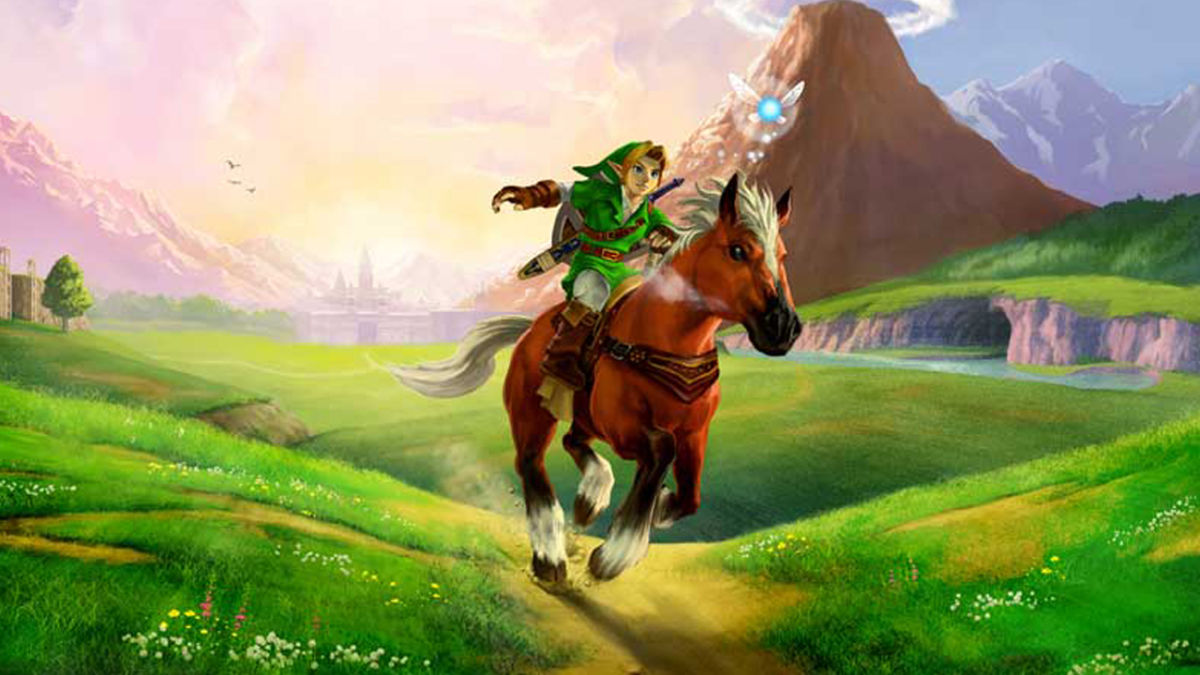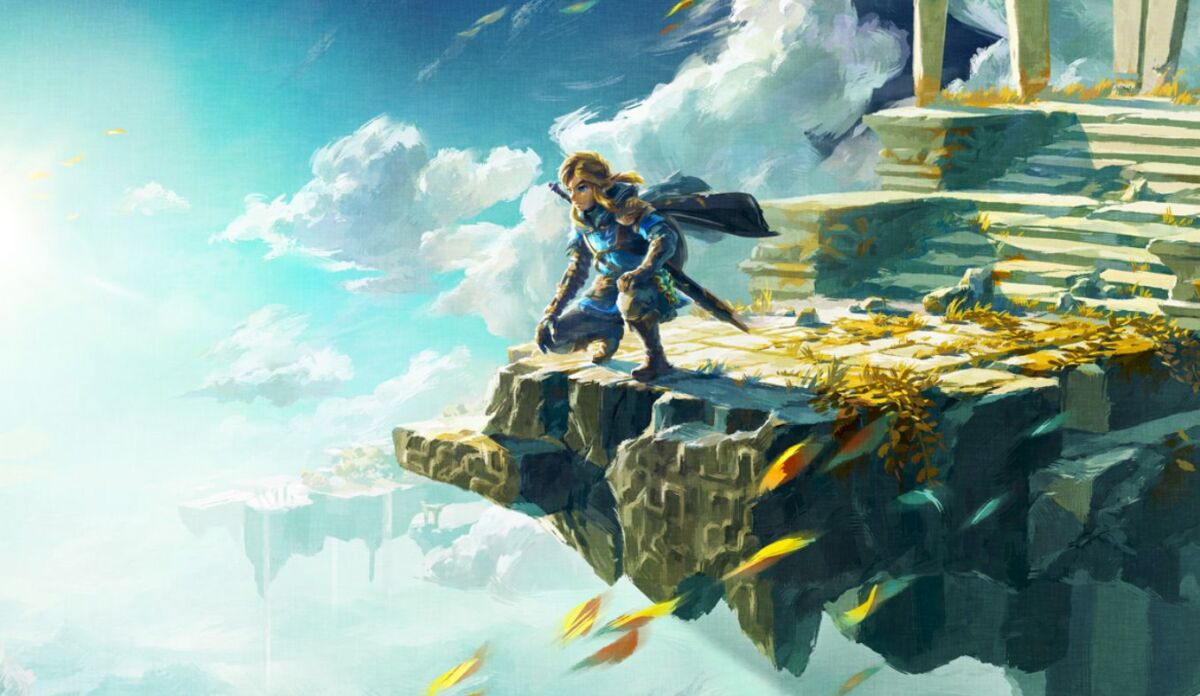The Legend of Zelda is on a lot of Nintendo fans’ minds right now, as the next installment in the long-running action-adventure franchise, Tears of the Kingdom, edges closer to release. One way of killing time between now and when Tears of the Kingdom hits shelves on May 12, 2023, is to revisit past entries in the Legend of Zelda canon. You might even decide to play through Link’s many exploits in chronological order – something that’s easier said than done.
The history of Hyrule can be tough to get to grips with, especially since the fantasy kingdom’s timeline doesn’t line up with the Legend of Zelda games’ real-world release order. What’s more, some Legend of Zelda outings take place outside the franchise’s core continuity. This makes life difficult for gamers eager to experience the Legend of Zelda’s story from start to finish – and it’s where this Hyrule history guide comes in handy. By the time you’ve finished reading it, you’ll be up to speed on everything you need to know about the Legend of Zelda timeline.
Links to the Past, Present, and Future

The first thing to note about the Legend of Zelda timeline is that it doesn’t chart the adventures of a single person. There isn’t one heroic warrior named Link, but several – all different incarnations of the same soul reborn throughout Hyrule’s history. The upshot of this is that the Legend of Zelda franchise is, in essence, an anthology series. Most (but not all) of its entries take place in different eras, and each of these eras is populated by different manifestations of Link and his supporting cast of heroes and villains.
These alternate versions of Link, Princess Zelda, Ganon, and the rest share plenty in common with each other (their fundamental personalities are identical, in fact). However, they’re also distinct individuals. What this means in practice is that every canonical Legend of Zelda game outside of the direct sequels is headlined by its own Link, and more importantly, takes place in its own time period.
Which Games Are (and Aren’t) Part of The Legend of Zelda’s Canon?

So, we’ve covered the different games/different Links wrinkle. Now, let’s clear up which of those games are part of official Legend of Zelda continuity. Fortunately, this should be less challenging to wrap your head around, as most of the franchise’s titles do indeed fit within Nintendo’s wider Hyrule canon. The full list of canonical Legend of Zelda games is as follows:
- The Legend of Zelda (1986)
- The Adventure of Link (1987)
- A Link to the Past (1991)
- Link’s Awakening (1993)
- Ocarina of Time (1998)
- Majora’s Mask (2000)
- Oracle of Seasons / Oracle of Ages (2001)
- Four Swords (2002)
- Wind Waker (2002)
- Four Swords Adventures (2004)
- The Minish Cap (2004)
- Twilight Princess (2006)
- Phantom Hourglass (2007)
- Spirit Tracks (2009)
- Skyward Sword (2011)
- A Link Between Worlds (2013)
- Tri Force Heroes (2015)
- Breath of the Wild (2017)
- Tears of the Kingdom (2023)
What Legend of Zelda games don’t Nintendo consider part of the official canon? All of the spinoffs, basically. This includes:
- BS Zelda no Densetsu (1995)
- BS Zelda no Densetsu Inishie no Sekiban (1997)
- Link’s Crossbow Training (2007)
- Hyrule Warriors (2014)
- Hyrule Warriors: Age of Calamity (2020)
Satellaview efforts BS Zelda no Densetsu and BS Zelda no Densetsu Inishie no Sekiban both feature many of the trappings of the franchise but don’t tie directly into it. Similarly, Wii light gun title Link’s Crossbow Training isn’t part of the “true” Legend of Zelda timeline, despite recycling assets from Twilight Princess.
Then there are the two Hyrule Warriors games, which are crossovers between The Legend of Zelda and musou series Dynasty Warriors. Nintendo was upfront about the first Hyrule Warriors installment being set out-of-continuity, however, the company billed its sequel, Age of Calamity, as a prequel to Breath of the Wild. While this proved partly true – the game unfolds 100 years prior to Breath of the Wild, after all – Age of Calamity’s time-hopping narrative effectively relegates it to its own, alternate timeline.
How Do the Canon Legend of Zelda Games Fit Together in Hyrule’s Timeline?

Now that we know which Legend of Zelda games are canon, let’s piece together the timeline. True to form, this is more complicated than it sounds, even knowing which bits do and don’t count – and that’s mostly because, at a certain point, Hyrule’s history splits (because of course it does).
Nintendo confirmed the Legend of Zelda’s branching chronology in the 2011 art book Hyrule Historia, which included the franchise’s first-ever definitive timeline. This timeline overrides previous documentation and statements by Nintendo and Nintendo of America, most notably the assertion that the titles in the series follow a single protagonist across an unbroken chain of events.
As presented in Hyrule Historia, the Legend of Zelda timeline starts out linearly, with each of the following games succeeding their respective predecessor in chronological order:
- Skyward Sword
- The Minish Cap
- Four Swords
- Ocarina of Time
From here, things get tricky, as the Legend of Zelda timeline splinters into two parallel branches: one in which Link triumphs over Ganon in Ocarina of Time and one in which he doesn’t. The downer timeline branch in which Link loses comprises the following Legend of Zelda games (in chronological order):
- A Link to the Past
- Link’s Awakening
- Oracle of Seasons and Oracle of Ages
- A Link Between Worlds
- Tri Force Heroes
- The Legend of Zelda
- The Adventure of Link
Meanwhile, the upbeat timeline branch in which Ocarina of Time’s Link wins is itself divided into two further branches, based on Link’s age. The first of these sub-branches is known as the “Child Era,” and sees Link sent to his childhood by Zelda, to prevent the events of Ocarina of Time from happening. He takes part in one more adventure, then vacates the stage for two successive new incarnations of himself. The Legend of Zelda games in this sub-branch include:
- Majora’s Mask
- Twilight Princess
- Four Swords Adventures
In the so-called “Adult Era” sub-branch of the Legend of Zelda timeline, the grown-up Link from Ocarina of Time goes AWOL after cleaning Ganon’s clock. A new Link subsequently emerges and embarks on a couple of quests, before being replaced himself. These games tell the “Adult Era” story:
- The Wind Waker
- Phantom Hourglass
- Spirit Tracks
Where does Breath of the Wild fit in with all this, you ask? Don’t worry, Nintendo has that covered – well, sort of. While the most recent Legend of Zelda entry dropped several years after the publication of Hyrule Historia, Nintendo confirmed in 2018 that it occupies the very end of the franchise’s timeline. That said, Nintendo continues to avoid spelling out which of the timeline branches Breath of the Wild connects to. As such, it’s currently up to fans of the franchise to decide whether all – or only some – roads in Hyrule lead to Breath of the Wild.
When is Tears of the Kingdom Set in the Legend of Zelda Timeline?

This brings us neatly back to where we started: Tears of the Kingdom. Despite speculation the upcoming Legend of Zelda installment might be a prequel to Breath of the Wild, Nintendo is on the record that Tears of the Kingdom is a direct sequel to that game. This means it takes place in the same era as Breath of the Wild and is headlined by the same version of Link, as well.
It also means that Tears of the Kingdom (not Breath of the Wild) marks the real endpoint of the Legend of Zelda timeline, at least for now. Whether this remains the case in years to come is impossible to say. Nintendo could just as easily rejig the established canon as it could develop new games set during pre-Breath of the Wild continuity. One thing seems certain, though: as long as there’s a Nintendo, there’ll be a Hyrule – and it’ll be up to Link to save it.
READ NEXT: 20 Best Switch FPS Games You Should Play
Some of the coverage you find on Cultured Vultures contains affiliate links, which provide us with small commissions based on purchases made from visiting our site.

